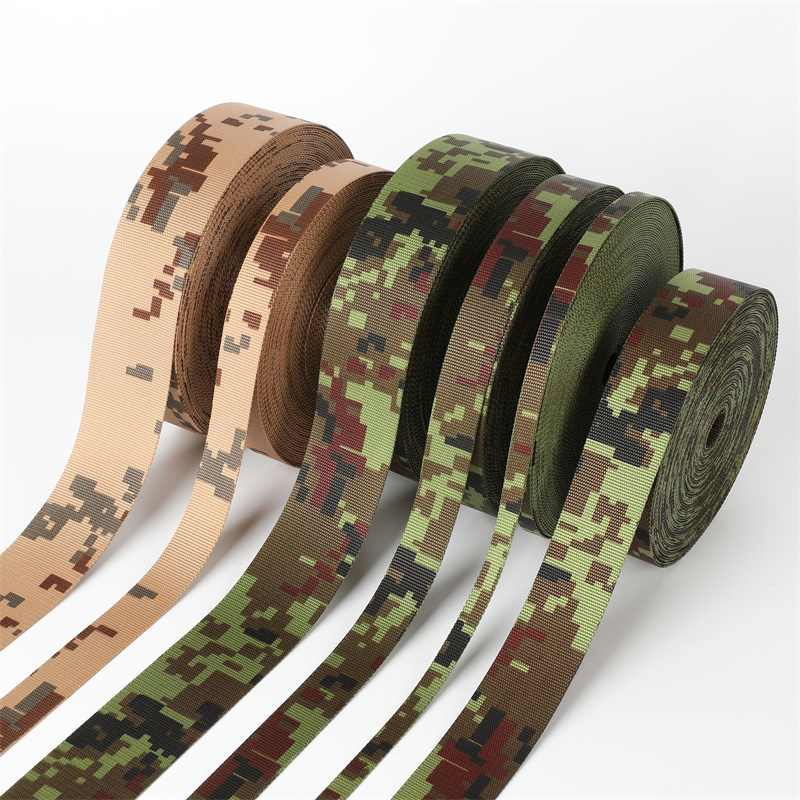From Climbing to Camping: How Nylon Webbing Supports Your Adventures
From Climbing to Camping: How Nylon Webbing Supports Your Adventures
Table of Contents
1. Introduction to Nylon Webbing and Its Versatility
2. What is Nylon Webbing?
3. The Benefits of Using Nylon Webbing
4. Applications of Nylon Webbing in Outdoor Activities
4.1 Rock Climbing
4.2 Camping
4.3 Hiking
4.4 Water Sports
Jul 12,2025

From Climbing to Camping: How Nylon Webbing Supports Your Adventures
Table of Contents
- 1. Introduction to Nylon Webbing and Its Versatility
- 2. What is Nylon Webbing?
- 3. The Benefits of Using Nylon Webbing
- 4. Applications of Nylon Webbing in Outdoor Activities
- 5. Choosing the Right Nylon Webbing for Your Adventure
- 6. Caring for Your Nylon Webbing
- 7. Safety Considerations When Using Nylon Webbing
- 8. Frequently Asked Questions
- 9. Conclusion
1. Introduction to Nylon Webbing and Its Versatility
Nylon webbing is a remarkable material often overlooked by outdoor enthusiasts. Its **versatility, durability, and strength** make it an essential tool for a variety of outdoor activities, including climbing, camping, and hiking. As adventure seekers, we understand the importance of reliable gear, and nylon webbing plays a crucial role in ensuring our safety and convenience.
In this article, we will explore the many uses of nylon webbing in outdoor adventures, its unique properties, and how to choose and care for it effectively. Whether you are a seasoned climber or a casual camper, understanding the benefits of nylon webbing can significantly enhance your outdoor experiences.
2. What is Nylon Webbing?
Nylon webbing is a strong and durable strip of nylon fabric, typically woven into a flat shape. It comes in various widths and thicknesses, with each type designed for specific applications. The weaving process lends strength and flexibility, making nylon webbing an ideal choice for various outdoor gear and applications, including slings, straps, and tie-downs.
The popularity of nylon webbing stems from its **high tensile strength**, resistance to abrasion, and ability to withstand extreme weather conditions. Its lightweight nature makes it easy to carry, while its resilience ensures it can handle significant loads, making it a must-have for adventurers.
3. The Benefits of Using Nylon Webbing
Nylon webbing boasts a host of advantages that cater to the needs of outdoor enthusiasts:
3.1 Strength and Durability
Nylon webbing is known for its incredible strength, often capable of bearing loads far exceeding its weight. This makes it suitable for applications where safety is paramount, such as climbing and securing gear.
3.2 Abrasion Resistance
The fabric's resistance to wear and tear allows it to withstand rugged conditions. Whether you are trekking through rocky terrains or setting up camp in rough weather, nylon webbing remains reliable.
3.3 Lightweight and Compact
Lightweight yet robust, nylon webbing is easy to pack and carry, making it ideal for outdoor adventures where every ounce counts.
3.4 Versatility
Nylon webbing can be used in various applications, from securing tents to creating harnesses. Its flexibility allows it to adapt to multiple uses, making it an essential component in outdoor gear.
4. Applications of Nylon Webbing in Outdoor Activities
Nylon webbing finds application across a range of outdoor activities. Let's explore some of the most common uses:
4.1 Rock Climbing
In rock climbing, nylon webbing is often used to create slings, harnesses, and anchors. Its **high tensile strength** ensures climbers have a secure connection to their gear, providing peace of mind during ascents.
4.2 Camping
When camping, nylon webbing is invaluable for setting up tents, securing tarps, or even creating gear loops. Its resistance to UV rays and weather conditions ensures that it lasts throughout the camping trip.
4.3 Hiking
Hikers can utilize nylon webbing for securing backpacks, making gear straps, or even as a makeshift belt for added convenience. Its lightweight nature makes it an excellent choice for long treks.
4.4 Water Sports
For those who enjoy water sports, nylon webbing is often found in life jackets, boat straps, and other water-related gear. Its ability to dry quickly and resist mildew enhances its effectiveness in wet environments.
5. Choosing the Right Nylon Webbing for Your Adventure
Selecting the appropriate nylon webbing is critical for ensuring safety and functionality. Here are some factors to consider:
5.1 Width and Thickness
Different activities require varying widths and thicknesses of webbing. For climbing, thicker webbing provides more strength, while narrower webbing may suffice for lighter applications like securing gear.
5.2 Breaking Strength
Always check the breaking strength of the webbing before purchase. This value indicates the maximum load the webbing can safely support. For climbing, a breaking strength of at least 4,000 pounds is advisable.
5.3 UV Resistance
If you plan to expose your gear to sunlight frequently, look for nylon webbing with UV resistance. This feature prevents degradation and prolongs the lifespan of the webbing.
5.4 Color and Visibility
Choosing brightly colored webbing can enhance visibility during outdoor activities, which may be crucial in emergencies or low-light situations.
6. Caring for Your Nylon Webbing
To ensure the longevity of your nylon webbing, proper care is essential. Here are some tips:
6.1 Cleaning
Regularly clean your nylon webbing to remove dirt and debris. Hand washing with mild soap and warm water is usually sufficient. Avoid harsh chemicals that can damage the fibers.
6.2 Drying
Always air dry your nylon webbing after cleaning. Avoid direct sunlight or heat sources, as these can cause the webbing to degrade over time.
6.3 Inspection
Before each use, inspect your webbing for signs of wear, fraying, or damage. Any compromised webbing should be replaced to ensure safety.
7. Safety Considerations When Using Nylon Webbing
Safety should always be a priority when using nylon webbing in outdoor activities. Here are some important considerations:
7.1 Weight Limits
Always adhere to the manufacturer’s specified weight limits. Exceeding these limits can lead to catastrophic failures.
7.2 Knot Tying
When using nylon webbing for climbing or securing gear, ensure that knots are tied correctly. Familiarize yourself with basic knot-tying techniques for added safety.
7.3 Storage
Store your nylon webbing in a cool, dry place away from direct sunlight. Proper storage protects it from environmental damage.
8. Frequently Asked Questions
8.1 What is the best way to secure nylon webbing?
Using appropriate knots is essential for securing nylon webbing. Techniques such as the figure-eight knot or bowline knot are commonly used in climbing.
8.2 Can nylon webbing be used in extreme temperatures?
Yes, nylon webbing is designed to withstand extreme temperatures, but prolonged exposure to very high or very low temperatures can affect its performance.
8.3 How can I tell if my nylon webbing needs to be replaced?
Inspect for signs of wear, fraying, or discoloration. If the webbing appears damaged, it is best to replace it immediately.
8.4 Is nylon webbing suitable for outdoor survival kits?
Absolutely! Its versatility and strength make it an excellent addition to any outdoor survival kit.
8.5 Can I use nylon webbing for home projects?
Yes, nylon webbing can be used for various home projects, such as crafting, securing items, or DIY projects.
9. Conclusion
Nylon webbing is an indispensable material for outdoor enthusiasts, providing strength, durability, and versatility across a range of applications. Whether you are scaling cliffs, setting up camp, or embarking on a hiking adventure, the right nylon webbing can enhance your experience while ensuring your safety.
By understanding the properties of nylon webbing and its various uses, you can make informed decisions about your outdoor gear. Remember to choose the right type of webbing for your needs, maintain it properly, and prioritize safety in all your adventures. Embrace the support that nylon webbing offers, and elevate your outdoor experiences to new heights.
Related Posts
Contact Us
E-mail:
Phone/WeChat:
Factory Address:
No. 601 ShiXing Road, Jimei District, Xiamen, 361024, China







